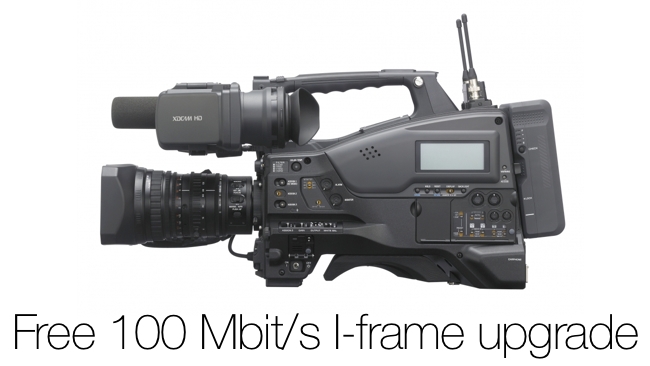
A surprise upgrade for Sony's shoulder-mount ENG cameras means they can record HD with the same quality as visually lossless ProRes
It used to be that when you bought a camera it was "frozen in time" until you replaced it with a better one. That's not true any more. We've just entered an era where you can buy a camera and - if you're lucky - it will keep getting better. This has just happened with Sony's ever popular PMW-300 and PMW-400 shoulder-mount ENG cameras.
And what an upgrade it is! The cameras' maximum recording quality has been boosted by allowing it to record 1080x1920 HD intraframe in Sony's XAVC codec. Bit depth is 10-bit and colour sub-sampling is 4:2:2.
Users need to upgrade to firmware version 1.2 on the PMW-300 and version 1.3 on the PMW-400.
What does this mean for users?
This is a massive upgrade in codec capability. XAVC is based around the H.264 codec so is intrinsically more efficient than MPEG-2.This version is intraframe, so each frame is fully encoded without needing to refer to previous our following frames. This will make it easier to edit, and there will be fewer artifacts, especially with high motion.
What does this mean for quality?
XAVC intraframe at 100 Mbit/s is approximately the same quality ProRes would be at around twice the bitrate. HD ProRes at 220 Mbit/s is generally considered to be "visually lossless". What does that mean? It means that if you look at the uncompressed footage from a camera (say, though an SDI or HDMI connection) and then look at it after it's been compressed to 220 Mbit/s ProRes, it will look the same, but it won't be the same: you'd need mathematically lossless compression for that. So the PMW-300 and PMW-400 will be able to record video that looks the same as uncompressed, at around half the bitrate (and storage requirement) of ProRes.
Note, though, that while ProRes is a very good codec, it is a very simple one in comparison to H.264-based ones like XAVC. So it will need more computing power when editing but probably less than when editing with Long-GOP XAVC.
What does this mean for the industry?
There's no doubt that it's a big leap in quality, but bigger than that is the idea that cameras can be upgraded to such an extent with just a firmware update. We're not sure exactly how they're able to do this because normally in mass-produced cameras (even professional ones) codecs are dealt with by specialised chips (usually ASICs) that are dedicated to the job. In other, less mass-produced equipment, encoding and decoding is handled by FPGAs (Field Programmable Gate Arrays) which are massively reprogrammable but run software at hardware speeds. They're relatively expensive.
So Sony has either started putting FPGAs into its cameras, which we doubt, or they have designed chips to handle a very wide range of codecs, but principally the Sony ones, and all the firmware update has done is unlocked an existing capability to work with 100 Mbit/s XAVC.
But however they've done this, it does mean that owning a camera is getting more like owning software: it just keeps getting better all the time.
More RedShark coverage of the PMW-400